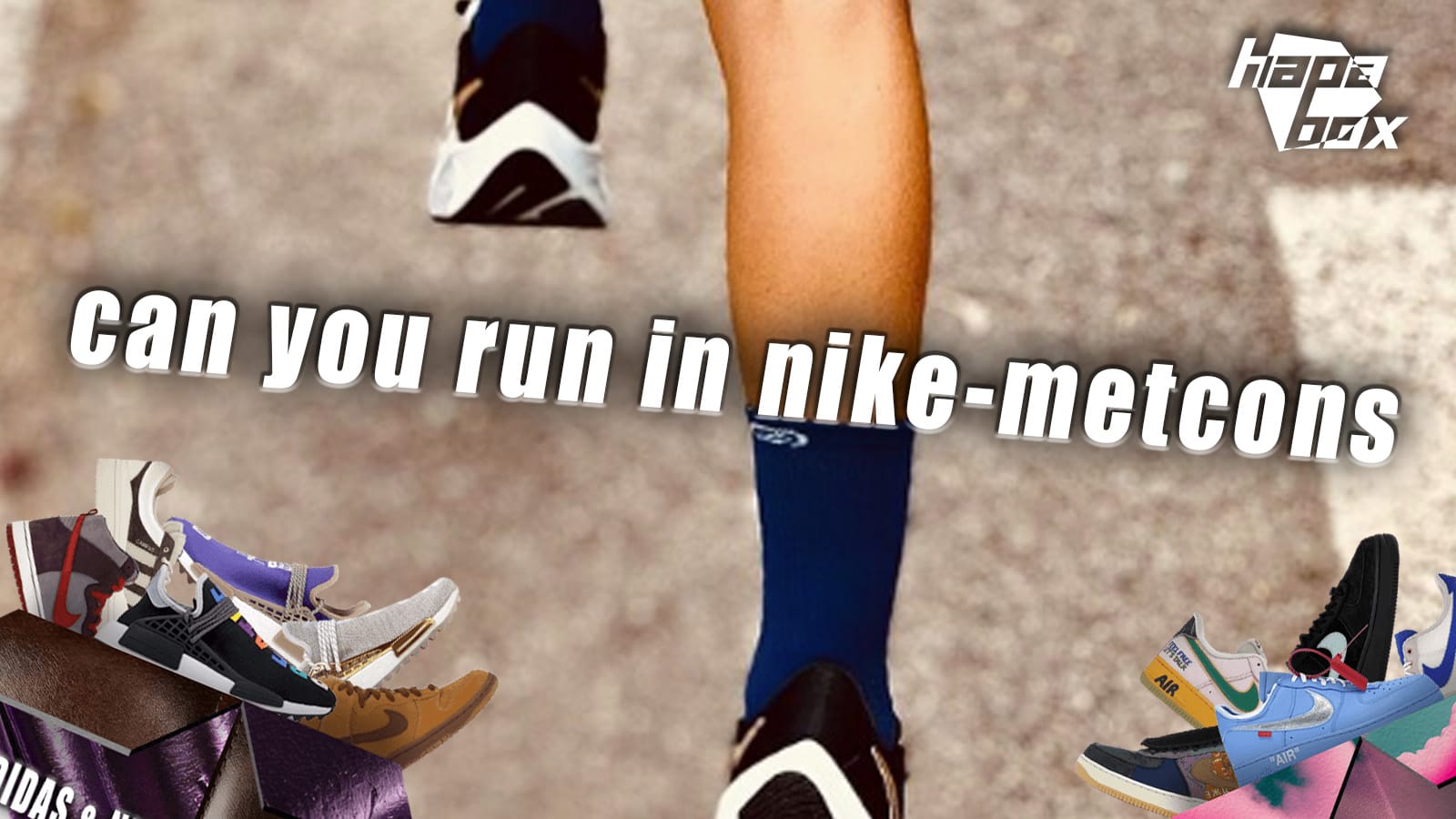The Metcon Dilemma: Can You Really Run in Your Favorite Gym Shoe?

The Nike Metcon series has become a gym staple worldwide, prized for its flat base, solid stability, and durability in demanding workouts. Whether you're crushing squats, grinding through deadlifts, or flying through burpees and rope climbs, Metcons deliver. But here’s the real question many athletes face:
Can you run in Nike Metcons?
Let’s break it down—because while the answer may be "yes, technically," the deeper truth is more nuanced.
Short Answer: You Can, But You Probably Shouldn't
Yes, you can run short distances in Nike Metcons. For warmups, CrossFit-style WODs, or the occasional sprint, they’ll hold up. But if your workout includes anything over a half-mile or consistent running, you’ll quickly feel their limitations.
Why Metcons Aren’t Designed for Running
Understanding how Metcons are built helps explain why they don’t shine on the track or treadmill.
🧱 1. Stability vs. Cushioning
Metcons prioritize a firm, low-profile sole for:
- Ground contact and force transfer during lifts
- Lateral stability in functional workouts
- Minimal heel-to-toe drop (usually around 4mm)
But running—especially over distance—requires:
- Impact absorption to protect joints
- A higher stack height and responsive cushioning
- A heel-to-toe drop that promotes forward motion
Running in Metcons is like sprinting in hiking boots—possible, but not ideal.
🦶 2. Stiff Forefoot = Disrupted Gait
Metcons are built to be durable, not flexible. The outsole wraps around the sides for rope climbs, and the stiff forefoot limits natural foot flexion during toe-off. As a result:
- Your gait feels restricted
- Stride turnover is inefficient
- You’ll fatigue faster and risk joint strain
Newer Metcon models have improved flexibility slightly, but still fall far short of a proper running shoe.
🏋️ 3. Bulk and Weight
Metcons are heavier than running shoes—no surprise, since they're loaded with rigid components for lifting stability. That extra weight may be fine during kettlebell swings or box jumps, but on a mile-long jog? It becomes dead weight.
What the Experts and Top Articles Say
A survey of high-ranking fitness articles reveals a shared structure:
- ✅ Start with a direct answer ("Yes, but...")
- ✅ Compare Metcons to running shoes in cushioning, flexibility, and weight
- ✅ Set thresholds (e.g., "OK for <1 mile")
- ✅ List use-case scenarios where Metcons are appropriate
- ✅ Include user feedback about real-world running experience
TL;DR: Metcons are built for stability, not sustained forward motion.
When Running in Metcons Is Okay
You can absolutely run in Metcons for:
- 🔸 Short cardio bursts during CrossFit WODs
- 🔸 Warm-up jogs under 800 meters
- 🔸 Sled pushes, shuttle runs, and dynamic circuits
You should avoid using Metcons for:
- ❌ Treadmill sessions over 1 mile
- ❌ Road or trail running
- ❌ Any endurance-based running workouts
✅ Pros and Cons of Running in Metcons
| 👍 Pros | 👎 Cons |
|---|---|
| Great for hybrid workouts | Lack of cushioning for long distances |
| Stable for mixed movement | Rigid forefoot limits natural motion |
| Durable outsole | Heavier and bulkier than running shoes |
| Stylish and versatile look | Can cause fatigue or joint pain over time |
The Verdict: Use the Right Tool for the Right Job
Nike Metcons are phenomenal for the gym. They’re built for strength, for stability, for explosive power—but not for pounding pavement.
If your workout includes short cardio bursts, Metcons are up to the task. But if your routine regularly involves running—whether 5Ks or steady treadmill work—you’ll be much better off with dedicated running shoes that are lighter, more cushioned, and biomechanically supportive.
A Swiss Army knife is versatile—but you don’t use its mini-saw to cut a tree. Same logic applies here: Metcons are your gym multi-tool, not your running shoe.
So, What’s Your Training Style?
How much running do you include in your weekly routine? If you're mixing weightlifting with cardio, it might be time to invest in two separate pairs—one for lifting, one for running. Your knees, ankles, and performance will thank you.
